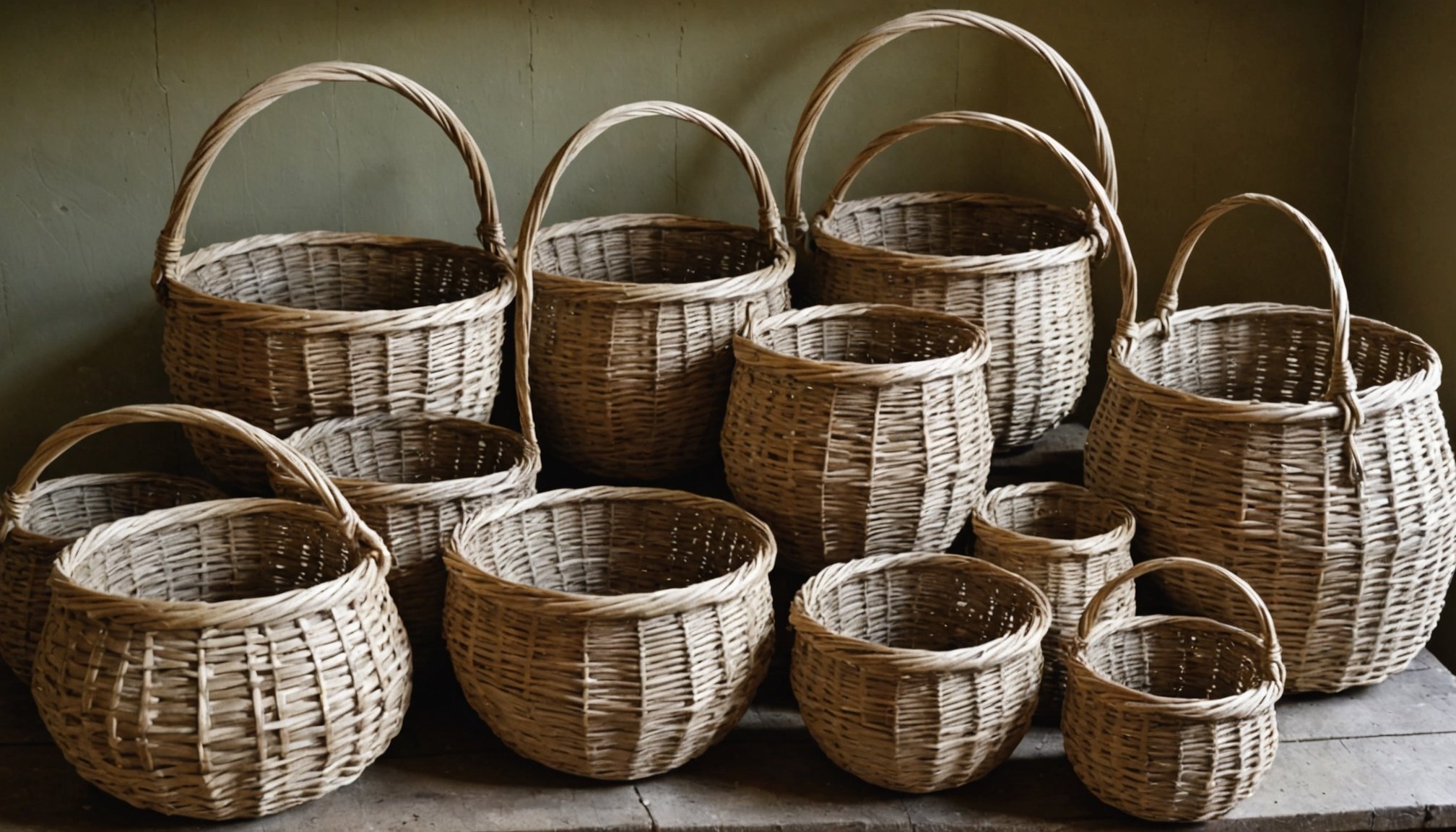Top Locations for Traditional British Basketry
When exploring the best basketry locations in the UK, certain regions stand out for their rich heritage and craftsmanship. The town of Luton is renowned for its historic connection to straw-plaiting, once a thriving industry. Similarly, the city of Hereford is celebrated for its traditional willow basketry, a craft that has been passed down through generations. Identifying these prime locations involves examining the history and cultural significance of these crafts within the community.
The criteria for selecting the best basketry locations in the UK include the presence of skilled artisans, historical continuity, and a supportive local culture fostering the craft. Areas like Somerset and Sussex not only boast vibrant basketry communities but also offer workshops and exhibitions that invite visitors to learn and appreciate the craft.
This might interest you : Explore the Majesty of Ancient Roman Architecture: A Comprehensive Guide to Top UK Sites with Expert-Led Tours
Basketry’s cultural backdrop in these regions is deeply rooted. Each location’s crafting techniques and styles are shaped by local resources, such as the specific types of willow or rush available, which influence the patterns and textures of the baskets. Understanding this intersection of culture, tradition, and material availability is essential when exploring the UK’s premier basketry destinations.
Workshops and Classes Available
Diving into the artistic realm of basketry is made more accessible through a variety of basketry workshops and classes across the UK. These educational opportunities cater to both novices and advanced practitioners seeking to refine their skills. Understanding the structure and availability of these workshops can enrich your basketry journey significantly.
Additional reading : Explore the Ultimate Medieval Festivals in the UK for an Authentic British Crafts Experience!
Overview of Classes
Classes range from short introductory courses to longer programmes. These basketry workshops and classes are tailored to fit learners’ skill levels, giving everyone the chance to engage in this craft. Beginner courses often focus on foundational skills and simple projects, providing a solid base in traditional techniques.
Types of Workshops
Advanced workshops delve deeper into complex patterns and specialize in unique techniques, catering to seasoned enthusiasts. Whether in group settings or private sessions, these workshops often feature hands-on experience, which is crucial for mastering basketry skills. Instructors frequently adopt interactive teaching methods to foster a more engaging learning environment.
Key Features of Effective Learning
The effectiveness of basketry workshops and classes is often tied to the learner’s ability to practice what they learn. Hands-on experience remains a critical component, allowing participants to experiment with different materials and methods. Classes with access to a wide variety of authentic tools and diverse materials, such as willow or rush, significantly enhance the learning experience.
Profiles of Renowned Artisans
Understanding the world of expert basket makers in the UK can greatly inspire and educate both enthusiasts and professionals. These artisans are celebrated for their rich histories and significant achievements in the world of basketry.
Artisan Backgrounds
Many famed artisans have roots in regions known for basketry, stemming from family traditions or just a passion for the craft. Their personal journeys often reflect resilience and dedication towards preserving and evolving this ancient art.
Specialized Techniques
What sets these artisans apart are their unique crafting techniques. From developing signature weaving styles to integrating innovative methods, these techniques are what define an artisan’s work. These craftspeople often blend traditional methods with contemporary twists to create distinct pieces.
The Influence of Local Materials
Local materials profoundly influence an artisan’s style. In regions where willow and rush are abundant, for example, basketry reflects these resources. This interplay between material and technique captures the essence of the UK’s basketry tradition. Understanding how artisans select and incorporate these materials helps one appreciate the deep connection between product and place within the artistry of basketry.
Techniques and Materials in Traditional Basketry
In the realm of traditional basketry techniques and materials, understanding common materials and key techniques is crucial for anyone intrigued by this ancient craft.
Common Materials Used
Traditional basketry heavily relies on materials like willow, rush, and cane. Willow is prized for its flexibility and strength, making it ideal for creating intricate patterns. Rush, with its softer texture, lends itself well to more delicate designs. Cane is often used for finishing touches due to its hardy nature. Each of these materials brings unique qualities, influencing the basket’s final appearance and functionality.
Key Techniques to Master
Mastering traditional basketry involves learning specific techniques such as weaving, coiling, and plaiting. Weaving, a foundational skill, integrates different materials to form the basket’s structure. Coiling, on the other hand, involves spiraling materials to build up the basket’s walls. Plaiting, often used for decorative elements, requires intertwining strands to create intricate patterns.
Historical Significance of Techniques
The techniques used in basketry have deep cultural importance, reflecting the evolution of societal practices. Over centuries, these methods not only fulfilled functional needs but also served ceremonial and artistic purposes. Understanding the historical context enriches one’s appreciation of the craft, revealing how traditional methods continue to inspire modern basketry.
Resources and Further Reading
To deepen your understanding of basketry resources in the UK, exploring various educational materials and community networks is essential. These resources provide insights into techniques, history, and contemporary practice.
Recommended Books and Guides
For those keen to explore basketry in detail, several books offer valuable knowledge. “Basketry: Projects, Techniques and Inspirational Designs” by Sylvie Begot is a comprehensive guide that covers both basic and advanced techniques. Additionally, “Weaving Country Baskets” by Margaret J. Dennett provides historical context and project ideas.
Online Resources and Communities
Engaging with online resources can significantly enhance your learning. Websites like Basketmakers’ Association offer a wealth of articles, tutorials, and forums for shared learning. Online classes, often available on platforms like Craftsy, allow you to learn from expert tutors remotely, expanding your skills efficiently.
Local Support Networks
Local networks and organizations also play a pivotal role in supporting basketry enthusiasts. The Basketmakers’ Association in the UK provides workshops, events, and a directory of artisans, fostering a nurturing environment for craft development. Joining such networks can facilitate hands-on experience, collaboration, and artistic growth in traditional basketry.











